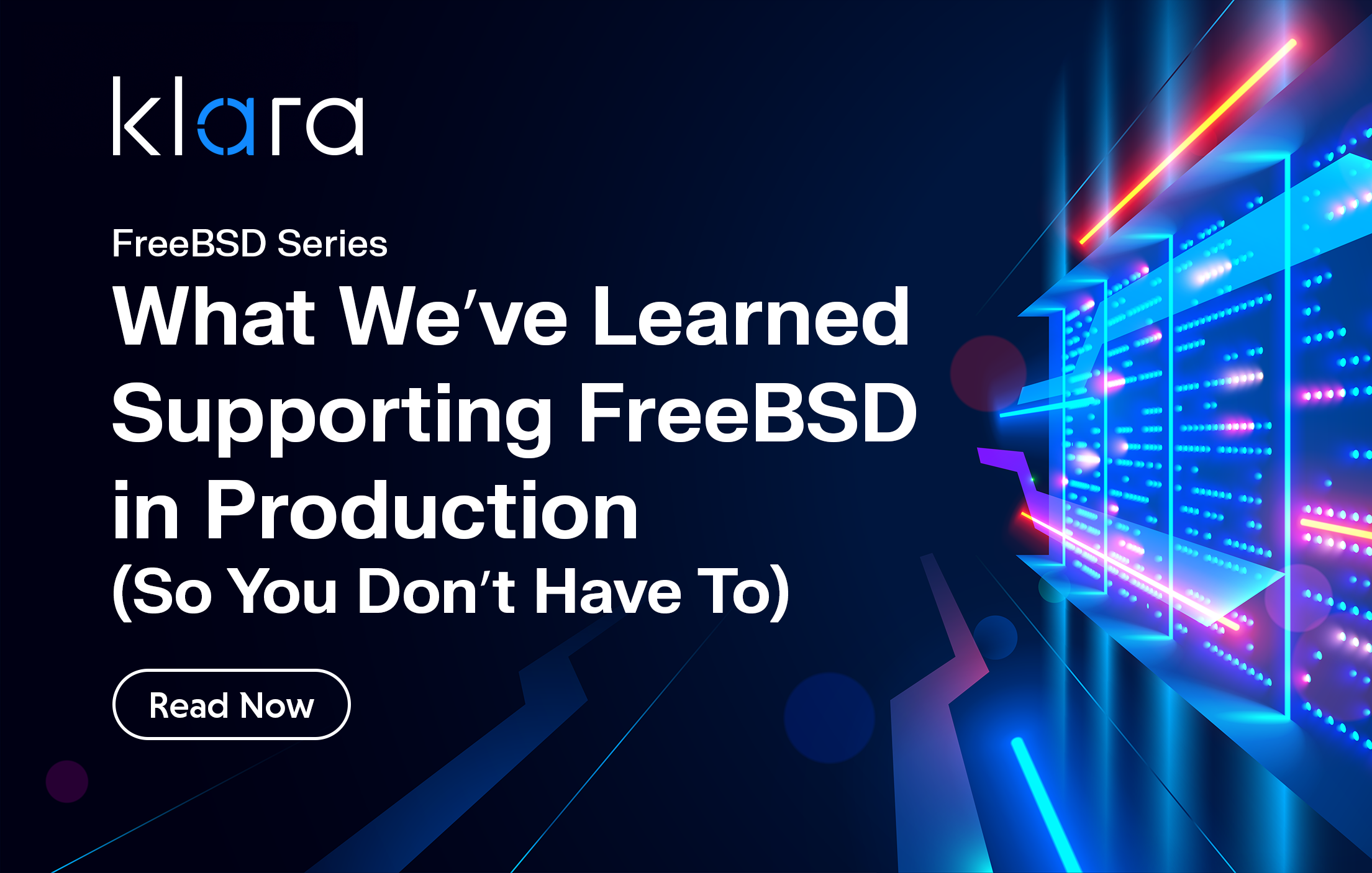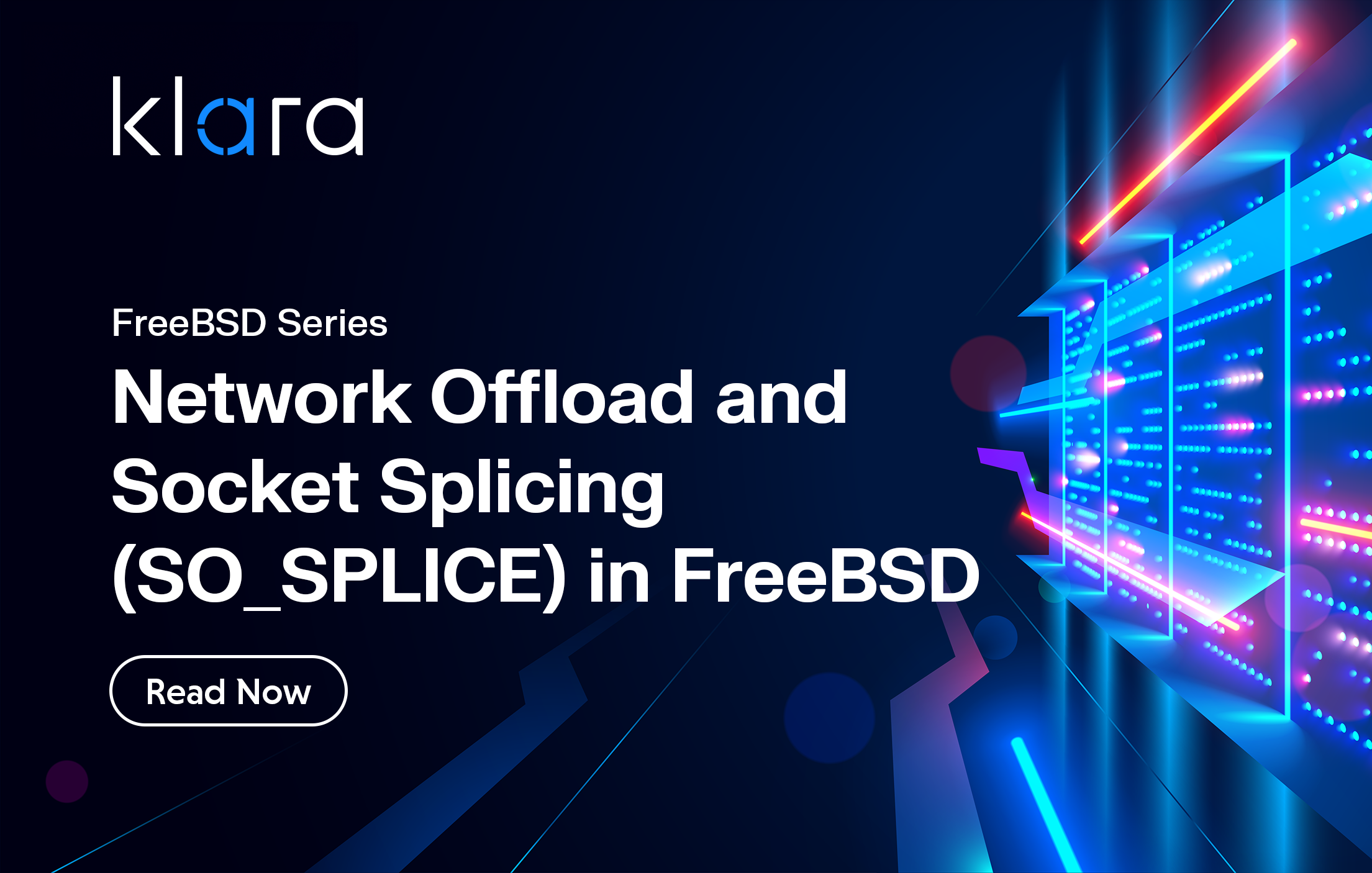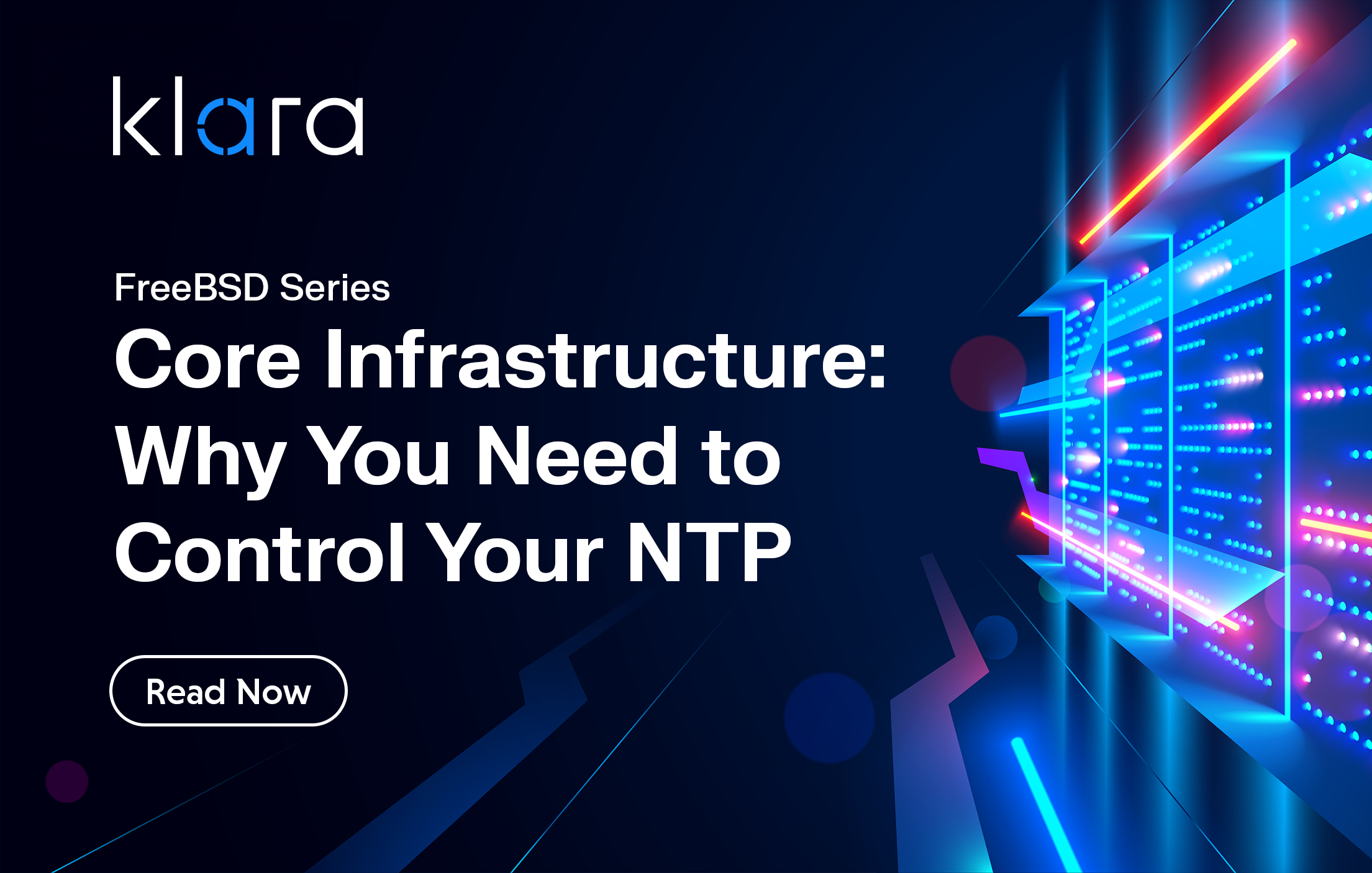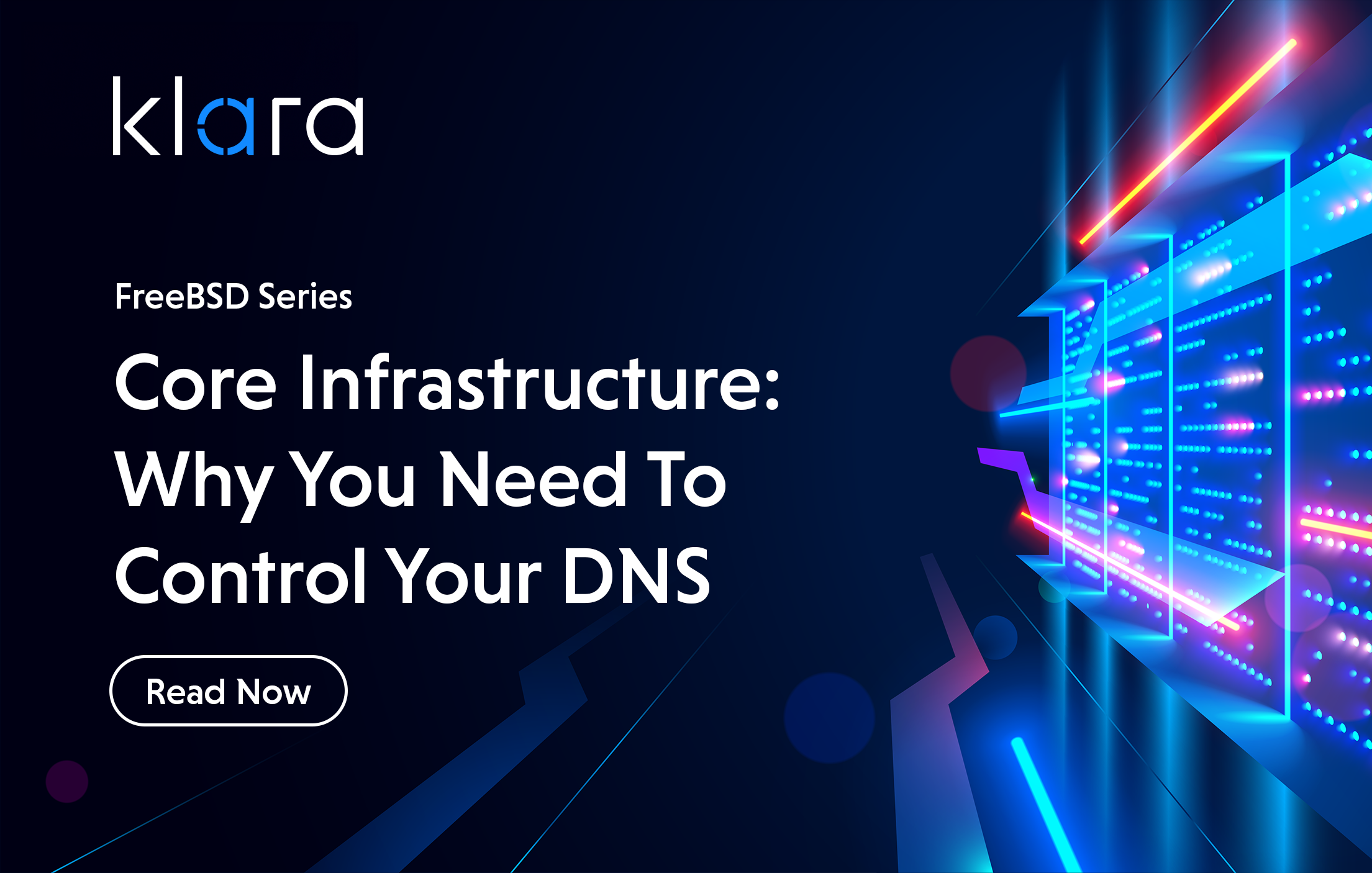Improve the way you make use of FreeBSD in your company.
Find out more about what makes us the most reliable FreeBSD development organization, and take the next step in engaging with us for your next FreeBSD project.
FreeBSD Support FreeBSD DevelopmentAdditional Articles
Here are more interesting articles on FreeBSD that you may find useful:
- FreeBSD Summer 2025 Roundup: Your Guide to Lock-In Free Infrastructure
- What We’ve Learned Supporting FreeBSD in Production (So You Don’t Have To)
- Maintaining FreeBSD in a Commercial Product – Why Upstream Contributions Matter
- Owning the Stack: Infrastructure Independence with FreeBSD and ZFS
- Inside FreeBSD Netgraph: Behind the Curtain of Advanced Networking
In the world of operating systems, there are always loud voices complaining about one operating system
or another, its lack of relevance, or wrong approach to a certain problem. Throughout the development of FreeBSD
as an operating system there have been triumphs and setbacks, but ultimately both Linux and FreeBSD have evolved
to be stable operating systems with very different philosophies and approach to start-up, set-up and usability.
When choosing an operating system, it is important to consider the best tool for the job, rather than just what
is most popular.
When it comes to deploying an operating system en masse, most customers will face the challenges of:
- How is this operating system supported
- Who can I reach out to when things don’t go as expected
- Are all the features that I need delivered with the OS, or are they available on a roadmap?
With Linux benefiting by a strong commercial presence, and more enterprise-driven feature set, it’s easy to understand
why distributions such as Canonical’s Ubuntu and Red Hat Linux took over enterprise infrastructures. That being said,
there is no such thing as the perfect choice for everyone.
The perfect choice in terms of operating systems is what
fits the infrastructure best at a specific time. And while commercial distribution have a great backing when it
comes to support, it often doesn’t leave a lot of room for customization and right-sizing, especially if customers
are looking for a more a batteries included, build-your-own-platform type OS.
Klara provides complete support for FreeBSD, even when it
is customized and rolled into an appliance or product.
Understanding the Values of FreeBSD
This article started out by making it clear that the war between *NIX OSes is largely pointless. Understanding the
differences between distributions and making the right choice is very likely the only argument worth having. So instead
of demonizing (yep, we learned straight into that one!), we’re going to talk about how to leverage what FreeBSD has to
offer.
Kernel vs. OS – Ready to Launch
Linux is a kernel, not an OS. This is also why when we talk about Linux we tend to talk about a plethora of Linux
distributions which are just varieties of implementations. Once you settle on a distribution you get all the necessary
items from tools to a GUI. FreeBSD is a complete operating system meaning that all of it is boxed and ready to go and
you can immediately benefit from the work of the FreeBSD community rather than going into the smaller factions of it
(Ubuntu vs. Debian vs. Red Hat vs. others).
BSD Licensing – Great for Platform Building
Licensing is often brought up, but for regular users, it often won’t matter that much. If you’re running a fleet of
servers or maybe planning on deploying an OS for all the laptops in an infrastructure, you’re likely to care very little
about whether the system is GPL or BSD. However, if you plan on building a new router, or any sort of appliance, and
need an OS to get started, then it starts to make a big difference. Often, when you build an appliance, you need to
alter the code in ways that work for your new platform, and being bound to release that code into the wild and the
complications regarding later monetizing said platform, makes GPL Licensing (specific to Linux distros) especially
unattractive.
Community and Userbase – A Question of
Philosophy
When choosing an operating system for your server environment, the first question might not necessarily be if commercial
support is available, but how easy it is to find resources, how friendly is the community and what the learning curve is
like. Linux benefits for a large historical presence which over time created numerous experienced sysadmins both in
large enterprises and smaller businesses. Meaning that at times the temptation might be to go for Linux as the “easier
to hire for” operating system.
But then again, there is the community. The BSD project stayed true to its origin and to this day is being led by a set
of people, rather than concentrating most (if not all) power with one person. Decisions about the FreeBSD kernel and
development direction are being made by the FreeBSD Project as a group with democratically elected technology leaders.
Cost Efficiency on FreeBSD vs. Linux
Establishing cost efficiency between the two operating system types depends a lot on the wants and needs of the customer
and project. We’ve mentioned before the challenge of a platform bring up on Linux systems. FreeBSD is more flexible and
with a community that is supportive of new projects whereas Linux has more stringent requirements. FreeBSD as a server
OS only makes sense when the team is ready to take on the OS itself, has the expertise or can leverage outside help with
ease.
Other FreeBSD vs. Linux Resources
We’ve written quite a bit in the past about making the right choice between the two operating systems. So here are some
useful reads when trying to make a choice between FreeBSD and Linux:
1.) FreeBSD vs Linux - Which Operating System to use
for OpenZFS
In December 2020, the OpenZFS project completed unifying the OpenZFS codebase between the FreeBSD and Linux platforms.
This helps ensure cross-compatibility between the two—but there are still some implementation and even a few feature
differences worth paying attention to. This write-up goes over the remaining OpenZFS differences, to help anyone on the
fence decide which OS to use beneath our favorite filesystem.
2.) FreeBSD vs. Linux - Networking At A
Glance
Network is incredibly important in every infrastructure, and network configuration differences can be pretty challenging
between different OSes. This article covers several network technologies where Linux and FreeBSD have equivalent but
different implementations and how to work with them.
3.) FreeBSD vs. Linux - Virtualization Showdown with
bhyve and KVM
Although the bhyve management ecosystem is currently quite limited in comparison to Linux's KVM, its performance is
already quite impressive. For storage-heavy workloads, the benefit of bhyve's emulated NVMe controller is difficult to
overstate—it produced massive throughput improvements that even a long-time KVM fan simply cannot ignore.
4.) FreeBSD vs. Linux - Package Management
Package managers on various Unix distributions make it easy for system administrators to manage the software installed
on the operating system. Packages are an easy, straightforward way to install software that avoids time-consuming
configure, compile, install sequences. The popularity of package managers permeates all Unix distributions. Yet there
are subtle differences in the approach that Linux vs. FreeBSD take in handling packages. How does Linux compare to
FreeBSD's way of managing packages?
And lastly, if you're looking to migrate
from a Linux-based environment to FreeBSD, how would you go about it?
5.) Easily Migrating from Linux to FreeBSD
If you are already experienced with Linux, FreeBSD should feel very familiar. The operating systems have a lot in
common, due both to their Unix heritage and many shared modern components. Much of what may be unfamiliar to a Linux
user adopting FreeBSD is also inconsistent between Linux distributions themselves. This article covers some of the
conceptual differences between Linux and FreeBSD, and go on to contrast some aspects of the basic system utilities and
the differing views of hardware given by the two systems.
officeklara
Learn About KlaraDla graczy szukających informacji o najlepiej wypłacalnych kasynach w Polsce, polecamy odwiedzić stronę https://pl.kasynopolska10.com/najlepiej-wyplacalne/, gdzie nasi partnerzy z kasynopolska10 oferują szczegółowe analizy i rekomendacje.
What makes us different, is our dedication to the FreeBSD project.
Through our commitment to the project, we ensure that you, our customers, are always on the receiving end of the best development for FreeBSD. With our values deeply tied into the community, and our developers a major part of it, we exist on the border between your infrastructure and the open source world.














